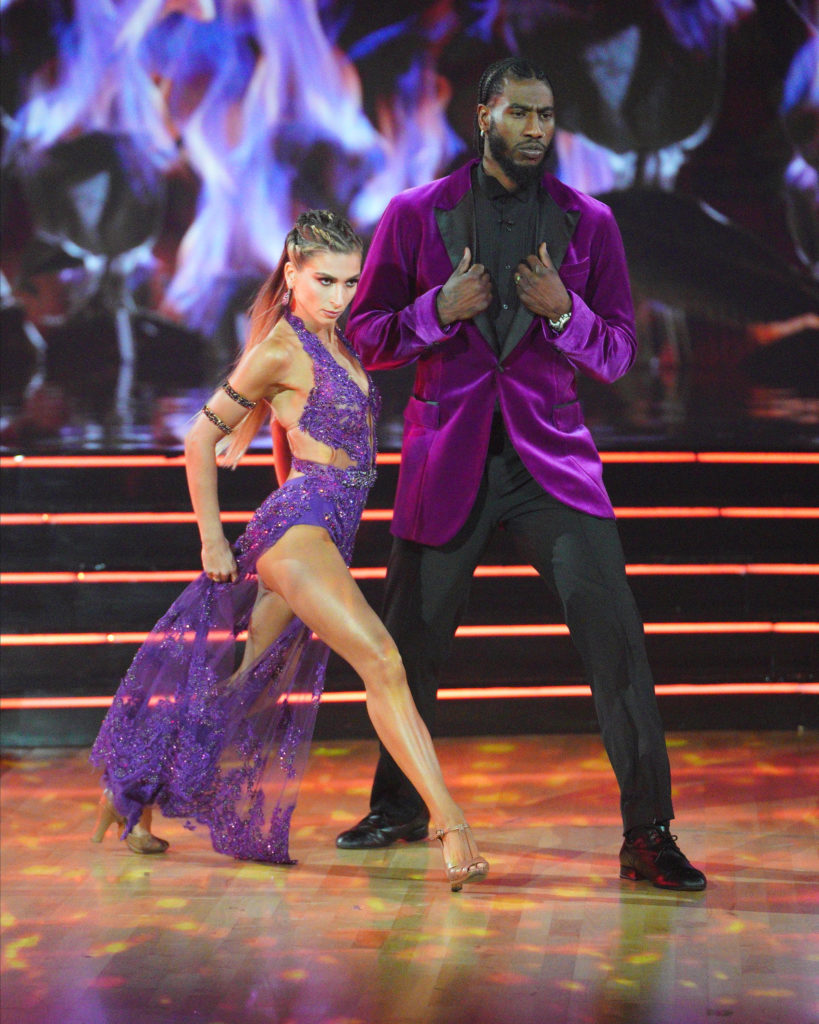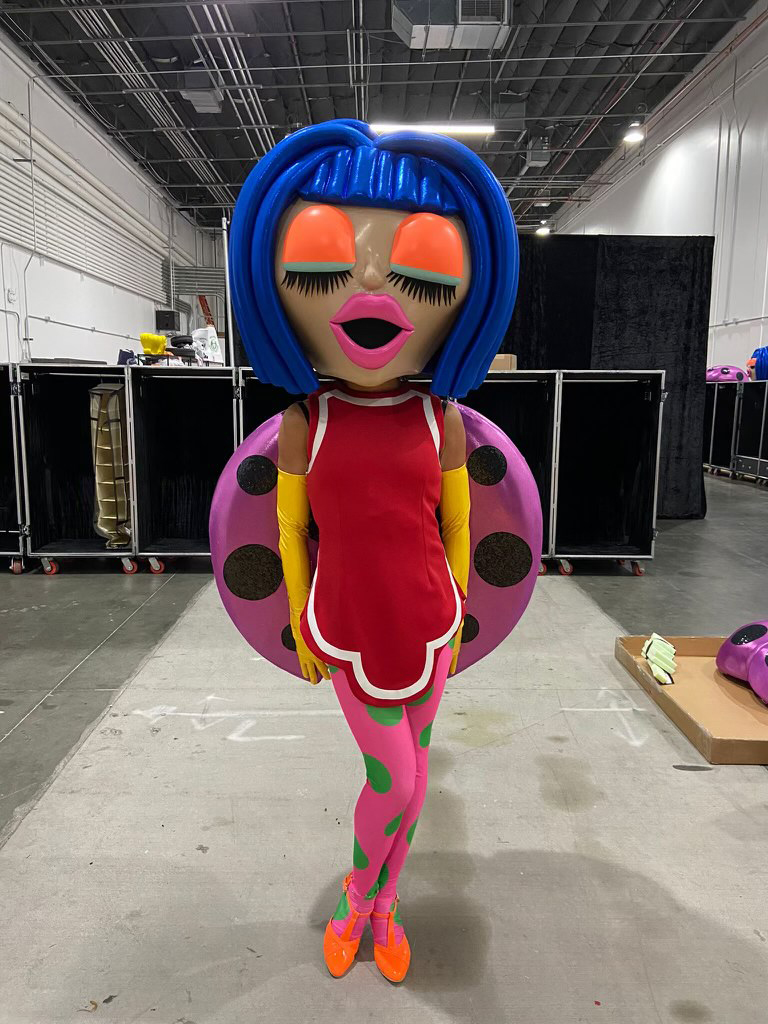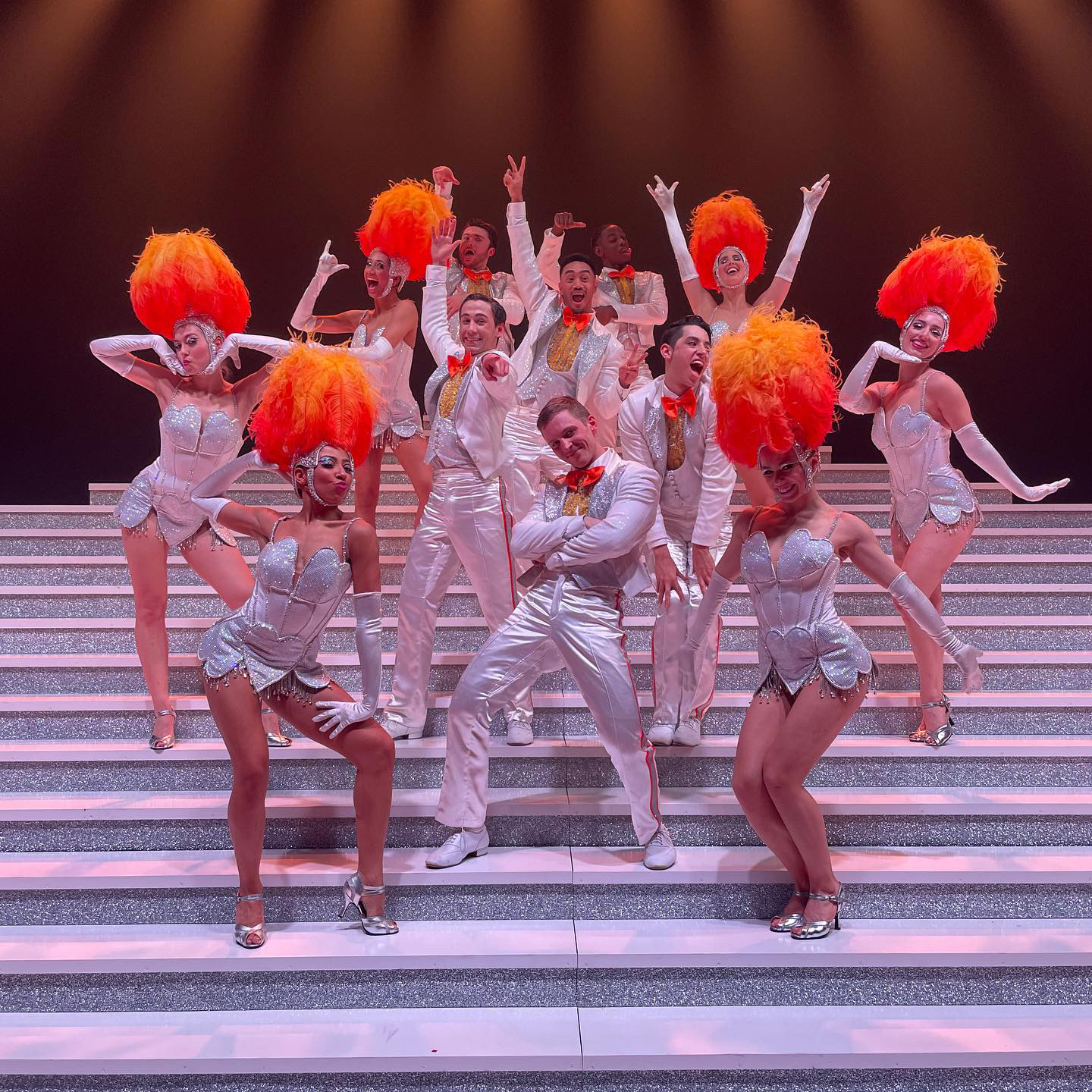Costume Drama: Mastering the Quick-Change Game
With weeks of dance rehearsals to focus on, it can be easy to forget about costume changes—until you miss an entrance because of a quick-change struggle. On Broadway, a TV show or a concert tour, there’s a team of people to help make speedy changes manageable, from costume designers who devise time-saving garments to backstage dressers who can help you in and out of them. Smaller shows and indie productions probably don’t have a big costume crew, so we asked pros for tips on how anyone can tackle quick-changes.
THE EXPERTS: Daniela Gschwendtner and Steven Lee, “Dancing with the Stars” costume designer
THE DESIGN PROCESS: Gschwendtner and Lee have designed the professional and celebrity looks on the “Dancing with the Stars” live show and tour for 15 years—and that has meant countless quick-changes. With dozens of themed looks to create on a weekly basis, the design process can get tricky. “Plus, we don’t get notified about who is doing the quick-changes right away because they’re still working out the order of the show,” explains Lee, who designs the men’s looks.

To make everything as quick-change-friendly as possible, they try to avoid multipiece costumes, buttons and zippers. “The girls probably have it a little bit easier,” says Gschwendtner, who designs the women’s costumes. “I try to connect everything as one unit that you can slip on, hook and go.” While a one-piece is nearly impossible for the men, Lee still has his tricks. “If there are buttons on the shirt, I might convert them to Velcro, or sometimes I’ll attach a shirt to a jacket to make it one unit,” he says. “If there’s a sock and shoe change, I’ll have him layer the socks so he can just whip the first pair off.”
“The changes for TV are normally during a commercial break, and they’re quick, but not like on the tours,” says Gschwendtner. For the tour, where a two-hour show can lead to 40 to 50 dances with different costumes, it’s all about coordinating as a team. During fittings, Lee makes sure the dancers are totally comfortable with the mechanics of the 20-second garment changes. “I’m done once the design is done, but the dancers have to live with it for months.” But no matter how much forethought goes into a design, “Occasionally somebody doesn’t make a quick-change on tour, and they’ll come in a little later than they should,” says Gschwendtner. “It’s not ruining the show, and it’s more important that everyone is safe.”
THE EXPERT: Madeleine DeGracia, Pacific Northwest Ballet wardrobe manager
THE PREPWORK: Before the PNB costume shop builds the garments for classics like Swan Lake and newer works like Crystal Pite’s Plot Point, you’ll find DeGracia and her small year-round team making detailed spreadsheets of every quick-change. “You need itemized inventory lists that tell you everything from the dress to the undergarments,” DeGracia says of knowing what each change entails. “Generally, we only get one rehearsal to practice these quick-changes, and then it’s opening night. I have to have everything completely documented down to what order they’re going to take things off and what order they’re going to put things on, so the dressers can be ready to go.” At the top of DeGracia’s priority list is providing private backstage spaces for the dancers to change, which are built by the PNB carpentry department. “Sometimes you have a quick-change that’s so fast, you can’t get to a booth. In that case, I tell the crew ‘You guys need to evacuate this area at this time,’” she says. “We try to make the dancer feel as safe as possible.”
THE EXPERT: Kylie James, dancer in Katy Perry’s Las Vegas residency show, PLAY

THE QUICK-CHANGES: Growing up in the competition world, Kylie James experienced her fair share of quick-changes. But nothing quite prepared the 2019 Juilliard graduate for the whirlwind pace—and complicated costumes—of PLAY. “The first costume run was definitely a shock,” says James, who has eight changes during the five-act show. “We get dressed in a quick-change booth, and the dressers have taken notes on how we each like our costumes set up,” she says. “In our Act 4 to Act 5 change, I have to run to the other side of the stage, so I have my skirt placed in a doughnut shape that I can put over my head and slide right into.”
While the dancers have a breather during Perry’s acoustic set, other changes are a frenzied rush, so the female dancers in PLAY have two main dressers in each booth, plus additional dressers waiting outside. “In Act 1, we go from an orange soldier costume with our hair and faces covered to a one-piece that covers our hair,” James says of her Act 2 bath-doll costume. “That change is the trickiest, because our bras have to be hooked, the little yellow underwear that we have has to be hooked, and we have to put on blue shoes before going to our accessories table for our gloves, floaties, sunglasses and bath-bubble hats.” The dancers have 2 minutes and 30 seconds to pull off the change and be positioned inside a prop and ready to go when the curtain rises. The dancers wig-wrap their hair before every performance, so their headpieces sit flush and to eliminate the need to pin and unpin the headpieces. “All of our headpieces are closed with either a hook-and-eye or a button,” says James. “It makes it way easier and more secure.”
The 5 Top Tips From the Pros
STEER CLEAR OF ZIPPERS: Though the dancers may not mind (and might even prefer) an easy-to-pull zipper, “Dancing with the Stars” costume designer Daniela Gschwendtner avoids them. “Zippers break, or if they don’t get zipped all the way, they’re a problem,” she says. “A strap and hook-and-eyes is better, because if one hook doesn’t catch, another will, and the costume will stay on.”
PREP YOUR QUICK-CHAGE SPACE: It’s crucial for dancers to know where they’re changing and what their costume should look like before they go back onstage. Pacific Northwest Ballet wardrobe manager Madeleine DeGracia works with the props department to set up quick-change booths, but she notes that even hanging a thick sheet on a garment rack can still provide ample privacy. She gives each dresser detailed instructions and a photo of each costume, then has the dancers and dressers figure a changing routine that works for them.
HAVE AN EMERGENCY REPAIR KIT ON HAND: “The amount that the dancers really push the garment is insane, and the garment just has to take it, as opposed to a baseball uniform where it’s all stretch and there’s padding,” says DeGracia, who notes that part of her job is to be prepared for repairs. “I’m decked out in emergency gear—I’ve got scissors around my neck, and a needle on my sweater,” she says, adding that she avoids safety pins, which can easily come undone and cause injury. To provide lighting backstage, DeGracia recommends hands-free flashlights. “We use this wonderful product that looks like a necklace; it’s a U-shaped flexible wire, and each end has a little LED on it.”
PRACTICE MAKES PERFECT: “It took us several rehearsals to get everything timed accordingly, and to figure out the best plan of attack to get into the costumes so that it really became its own set of choreography,” says dancer Kylie James of prepping for the complicated costume changes in Katy Perry’s PLAY. Extra rehearsals may be essential for more involved designs, like the headdress with extravagant plumage James wears in Act 5. “They’re beautiful, but they’re also massive and very heavy,” says James. “We had to have a rehearsal period just for getting used to moving in them, walking in them, and adjusting our choreography,” she says of the other accessories, which are attached using backpack-like straps. “We’re walking up, like, a thousand stairs, which makes it a lot harder.”
COLLABORATE AND COMMUNICATE: As they prepare for the “DWTS” tour, Gschwendtner and her co-costume designer Steven Lee work closely with not only the dancers and dressers but also the choreographers and producers. “During tech we might say, ‘We can put video content here or have a slower exit for the previous dance to give them an extra 30 seconds,’ ” Lee says. During performances, clear communication between dancers and dressers is key. “The best quick-changers calmly talk the dancer through it,” DeGracia explains. “The performer already has so much going through their head, thinking about the movement and the emotions, the dresser can really help them. We’re with the dancers at their most vulnerable, and we really build this strong trust with each other to get the job done,” she adds. “We could not get through a show without our dressers,” James confirms. “They’re literally our saviors.”Marissa DeSantis is a frequent contributor to Dance Magazine




